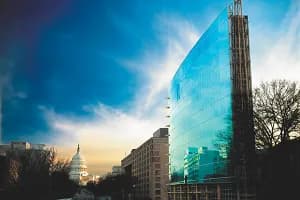Published in The American Genius
In the conifer forests of western North America, lodgepole pines dominate much of the 2,500-mile canopy spanning the Rocky Mountains.
In a harsh environment one mile above sea level, lodgepoles grow seven stories high despite being, on average, just two feet wide. The species has evolved to survive in a climate unlike anywhere else on the continent as they race—victoriously—to the sunlight before neighboring trees can.
After hitting its peak, a mature lodgepole goes on to produce thousands of pinecones each year. About half of those are what's known as serotinous cones. Waterproof and encapsulated in sap, serotinous cones linger safely on branches high above the forest floor for up to 50 years. When wildfires appear—as they always do—heat from the blaze causes these cones to explode, releasing countless seeds that are distributed by wind and gravity to sprout new trees and replace devastated forests.
Often caused by nearby lighting strikes, wildfires are a normal, healthy occurrence in ecosystems like this, sustaining inhabiting animals and helping to prevent catastrophic fire events that can inflict permanent damage on a forest.
As a result of climate change and human activity, however, forest fires have become progressively more frequent and destructive. The National Interagency Fire Center, an entity of the U.S. federal government, recently reported a 17% increase in U.S. wildfires between 2019 and 2021. Overall, the country is experiencing 223% more forest fires than we did in 1983—less than four decades ago.
The National Forest Foundation, chartered by Congress to enhance the American wilderness, is responding in part through a campaign to plant 50 million trees on national lands throughout the country. Their efforts, as the NFF describes, are intended to "restore tens of thousands of acres of habitat and protect watersheds that provide life's most sustaining resource."
Back in 2019, Vince Malta, then President of the National Association of Realtors®, tasked an NAR Presidential Advisory Group to explore how the world's largest trade association could better engage its members to promote sustainability and environmentally conscious development.
In a column published here back in the last winter, I explained how NAR offers grant resources to state and local Realtor® associations working to make their communities more resilient in the face of increasing wildfire and flooding events.
With this, we're hoping to encourage our partners in every U.S. zip code to develop new and unique strategies that foster sustainability and combat some of the most damaging impacts of climate change.
The Rogue Valley Association of Realtors®, representing an area of Oregon that is all too familiar with wildfire destruction, used a Consumer Advocacy grant from NAR to engage the National Fire Protection Association on a two-day training and certification program for local home inspectors.
But there is more to be done. And we're fortunate that our 2022 President, Leslie Rouda Smith, has brought sustainability to the forefront during her year atop NAR.
Most recently, NAR was thrilled to announce a partnership with the NFF that will result in 1.575 million trees being planted across the United States. In spearheading this initiative, Leslie is working to leverage the expanse of our membership by ensuring that—through a guaranteed donation from NAR—at least one tree for each current Realtor® will be planted in the United States by the end of 2025.
Cumulatively, these trees can reduce 750,000 metric tons of carbon from the atmosphere, the equivalent of about 145,000 homes' electricity use for one year. That's half the number of households in the densely populated city of Washington, D.C. And the benefits extend so much further.
But despite our members' willingness to engage on this initiative and other community-service undertakings like it, we recognize the limit of our expertise when it comes to tree planting and forest restoration. That's why it's so critical to have the NFF committed to working alongside us for at least the next three years.
Experts at the NFF and U.S. Forest Service will make all determinations regarding when and where trees will be planted based on needs in areas affected by wildfires, drought, and other similar disturbances. NFF only plants native, ecologically appropriate trees in areas that need the most help.
The U.S. Forest Service has estimated that every dollar spent on planting and caring for trees yields benefits two- to five-times that investment.
Back in 1997, New York City purchased thousands of acres of forested watershed in the state's upstate region. Since then, the $1.5 billion project has helped to preserve the drainage basin that supplies New York City's drinking water. In comparison, a filtration plant comprehensive enough to clean the city's water carried a price tag above $6 billion.
Today, the eight million residents of the country's most populated city enjoy some of the cleanest, best tasting drinking water in the world. Maybe that really is the secret to their bagels and their pizza.
Whatever the case, NAR is glad to be taking a small step in the effort to leave our planet better than the way we found it. But this initiative is about more than trees. It's a commitment to restoring the U.S. public lands that provide so much to all of us—clean drinking water, fresh air, enhanced stormwater mitigation, and a more promising future for our children.
NAR's Code of Ethics emphasizes this key point: "Under All is the Land." Nothing is more important to our profession—or to our world—than this land. And it's on all of us to be the best possible stewards of it.
Bob Goldberg is NAR's Chief Executive Officer. REALTOR® only means member of the National Association of REALTORS®. Learn more about NAR's trademark rules in the Membership Marks Manual.








